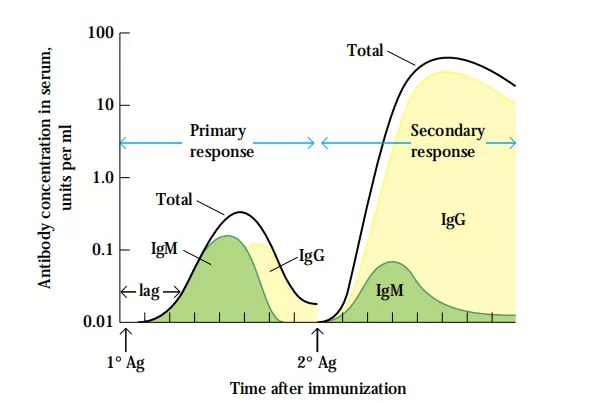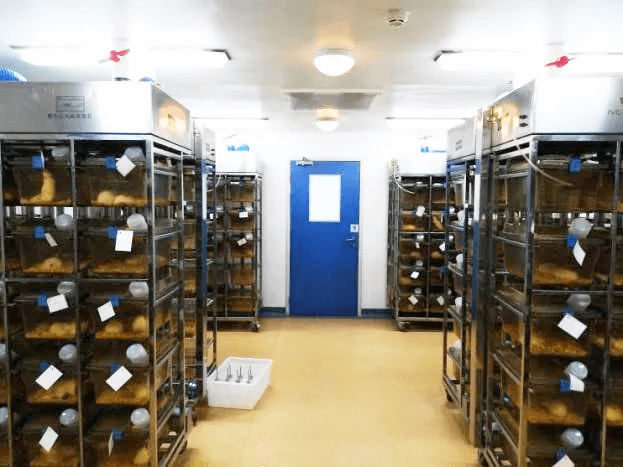Abstract: FineTest antibody production begins with strong immune response from immune animals stimulated by antigens. Processes of monoclonal antibody production are outlined below: extract b cell from spleen of immune animals and fuse with infinitely proliferative tumor cells in vitro; subclone hybridoma cells which are successfully fused; screen the relevant cell strains according to applications; get the antibody by cell culture or collecting ascites for further purification. Polyclonal antibody production is made by collecting animal antiserum and affinity purified method. The animal immune is important in antibody preparation.
Keywords: Antibody Production, Animal Immune, Antibody Quality Control
1. B Cell Antibody Production
Animal immune utilizes the humoral immune response mechanism of organism and cause the primary and secondary immune reaction respectively by the continuous stimulation from antigen. In practice operation, the actual immune effect is evaluated by antibody titer in the serum. The organism stimulated by the antigen will start the delayed primary reaction. Immature b cell is differentiated into memory cell or plasma cell by cloning, screening and proliferation. After the delayed period, serum titer exponentially increases and decreases after reaching a peak value. In primary immune reaction, IgM is secreted first. The IgG proportion will increase after switch of antibody subclasses.
2. Secondary Immune Reaction
The secondary immune reaction depends on the amount of memory b cells and memory t cells. Memory cells can be activated after encountering the same antigen. As a result, the secondary immune reaction happens. When the amount of memory cells is higher than immature b cells, the secondary reaction starts more quickly. Compared to primary reaction, secondary reaction has a shorter delayed period. The peak value of plasma cells and serum titer is higher and has a longer duration. Meanwhile, the quality of secreted antibody after the affinity and switch of subclasses is higher.

3. Immune Quality Control
Animal immune usually selects healthy young adult male animals. Their immune systems mature early and won't fluctuate without the influence of sexual cycle. To ensure the animal is healthy and free of disease during the immune process, there are strict requirements on animal sources and feeding conditions. Strictly speaking, animals shall be fed in SPF barrier system. Strict control on microorganisms and parasites should be performed.

4. Antigen Adjuvant Selection
Usually, antigens are emulsified by adjuvant and injected later. In antibody production, main components of most commonly used Freund's adjuvant are mineral oil and lanolin. In the first immune, Freund's complete adjuvant containing BCG vaccine or inactivated mycobacterium tuberculosis should be used. The adjuvant is mainly used to postpone the release of antigen and improve phagocytosis of phagocytes as well as presentation on antigen. Microinjection in lymph nodes can be applied in extremely valuable antigens. Adjuvant is needless at present. Antigen just needs 10-100μg.
5. Animal Immune Principles
For an immunization, besides the mentioned general principles, other considerations include animals' species, immunizing dose, injection mode and interval time.
5.1. Selection of Species
The difference between antigens and species of immune animal should be great. The close affiliation means homologous antigen can't be recognized by immune system. In addition, the immunogenicity of some antigens is very poor in immunizing certain kinds of animals, such as insulin to rabbit, many kinds of enzymes to goat(e.g. pepsinogen) etc. Antibodies are not easy to appear during immunization.
5.2. Immunizing Dose
Immunizing dose should be adjusted according to strong/weak antigenicity, molecular weight and immunization time. The dose can be properly increased for the large amount of antigen and long time interval. Antigen dose for big animals is about 0.5-1mg. 0.1-0.6mg fits small animals. The expected immune effect can't be obtained without proper dose.
5.3. Forms of Immune Injections
There are many forms of immune injections, including subcutaneous and intradermal injection for foot palm, cubital fossa and nape back where lymph nodes are dense. Besides, intramuscular injection and intravenous injection are also applied. The most commonly used method is subcutaneous injection. However, intradermal injection has its advantage in some situations.
5.4. Interval Time of Immune
The interval time of immune is an important factor. More attentions should be paid between the first and the second time. After the first immunization, the general interval time is between 10-20 days. After the second time, each interval time is between 7-10 days. The interval time shouldn't be too long to avoid the weakened stimulation and low antibody titer. The total number of immunization is between 5-8 times. It will take a long immunization time for the hapten to generate high-titer antibody. Sometimes, the total time is above one year.
6. Conclusion
In practice operation, immunization results are greatly influenced by immunizing dose, immune sites and combination of interval time. Antiserum titer should be monitored and adjusted according to the actual immune effect.
REFERENCES
Optimizing selection of large animals for antibody production by screening immune response to standard vaccines, PMID: 26775851.
